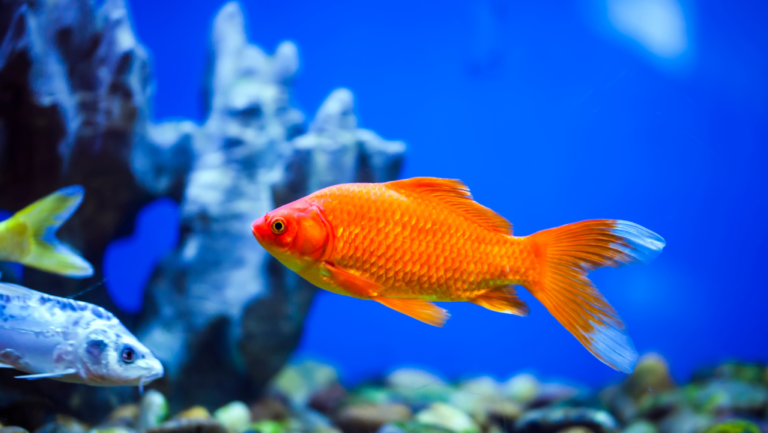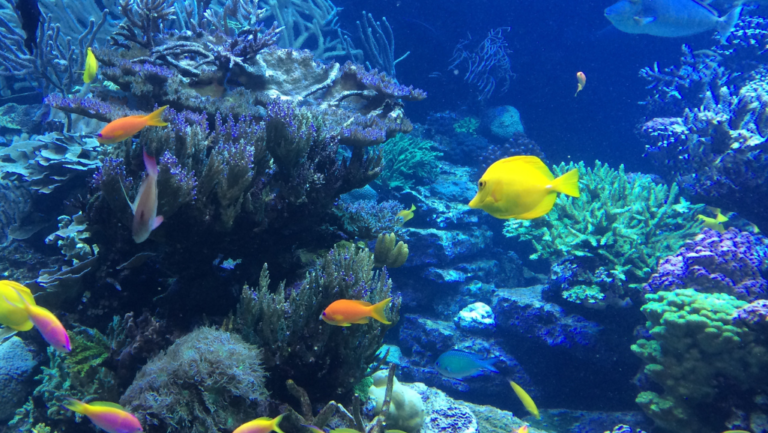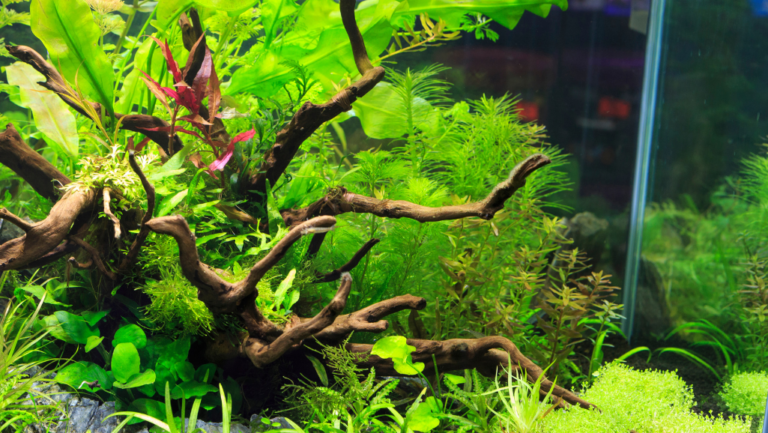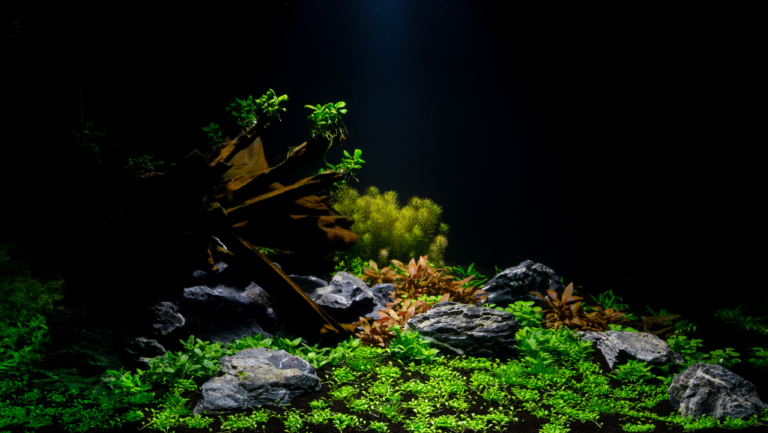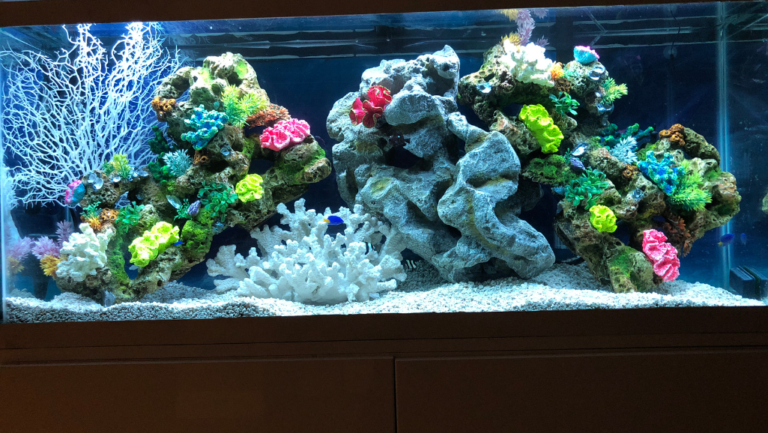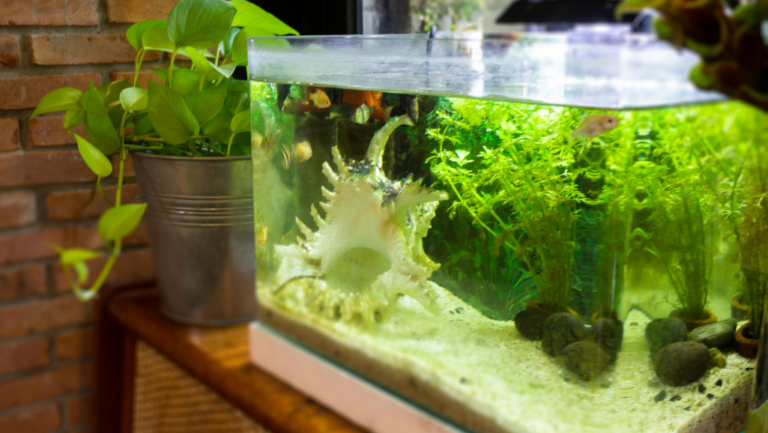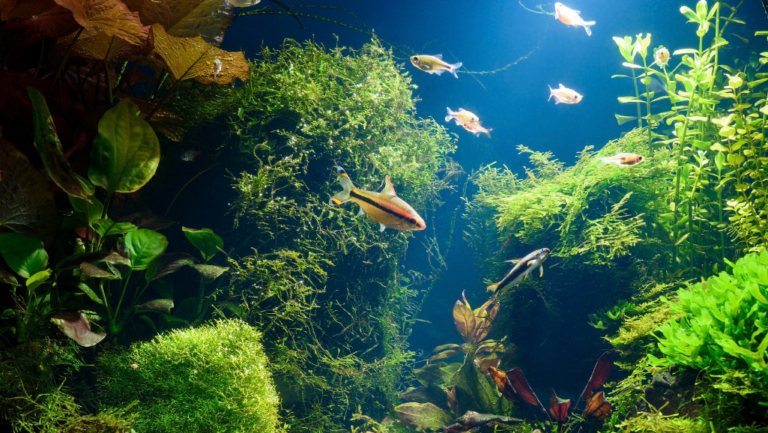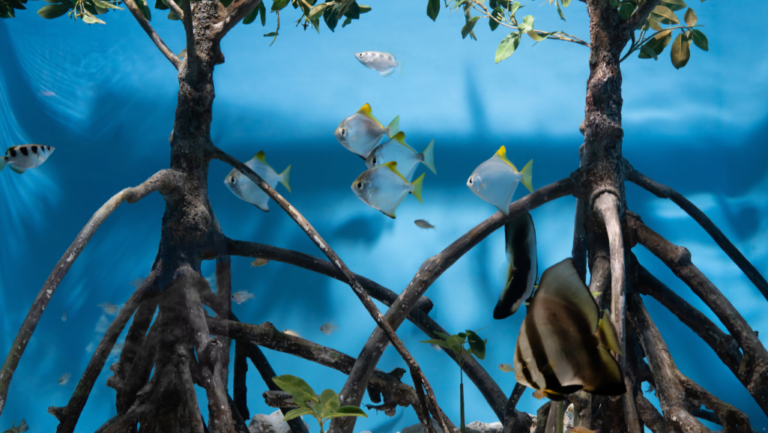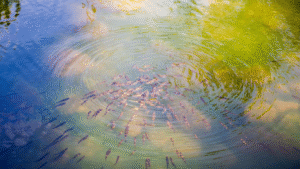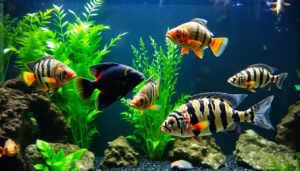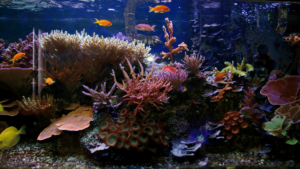Starting your first tank can be exciting but also a bit overwhelming. Choosing the right species is crucial for success. Hardy, colorful, and easy-to-care-for options are ideal for those new to the hobby.
This guide focuses on helping beginners create a thriving underwater world. It draws on reliable sources and expert care tips to ensure your tank setup is both beautiful and sustainable. Whether you’re setting up a small desktop tank or a larger one, this article has you covered.
We’ll explore species that are budget-friendly and low-maintenance. From vibrant tetras to peaceful catfish, you’ll find options that suit your tank size and skill level. Research and informed decisions are key to a successful start.
For more detailed resources, visit Aqua Joy Life. Their comprehensive guides on species profiles and care tips are invaluable for new aquarists. Let’s dive into creating a stunning aquatic environment!
Key Takeaways
- Best Starter Aquarium Fish.
- Choose hardy and easy-to-care-for species for your first tank.
- Research is essential for a successful aquarium setup.
- Small tanks are great for beginners, but consider future needs.
- Vibrant and colorful species can make your tank visually appealing.
- Reliable sources and expert guides ensure proper care and maintenance.
Introduction: Beginning Your Aquarium Journey
Embarking on your aquatic adventure requires thoughtful planning and preparation. Setting up a tank is more than just adding water and pets; it’s about creating a balanced environment where your aquatic friends can thrive.
One common mistake beginners make is selecting species with specialized care needs. These pets often require specific water conditions, diets, or tank setups that can be challenging for newcomers. Instead, focus on hardy species that are easier to maintain.
Proper food and water quality are essential for a healthy tank. Choosing the right diet for your pets ensures they get the nutrients they need. Regular water testing and maintenance prevent issues like ammonia buildup, which can harm your aquatic life.
The variety of species available is vast, each offering unique colors and personalities. From vibrant tetras to playful platies, there’s a lot to explore. This guide will provide detailed information on care, feeding practices, and maintenance to help you succeed.
“The key to a thriving tank is understanding the needs of your pets and creating an environment that supports their well-being.”
As you prepare to set up your tank, remember to gather as much reliable information as possible. Researching species, equipment, and maintenance routines will set you up for success. This guide will walk you through each step, ensuring your aquatic journey is both enjoyable and rewarding.
Understanding Your Aquarium Environment
Creating a thriving aquatic environment starts with understanding the basics of your tank setup. The right size, water conditions, and equipment are essential for maintaining a healthy ecosystem. Let’s explore these key factors to ensure your aquatic pets thrive.
Tank Size and Water Conditions
The size of your tank plays a crucial role in the well-being of your aquatic life. Larger tanks, like a 20-gallon setup, offer more stability and flexibility for adding pets. Smaller tanks, such as 5-10 gallons, are easier to manage but require more frequent maintenance.
Water conditions are equally important. Maintaining the right pH and temperature ensures a balanced environment. For example, tetras thrive in a pH range of 7.0 to 7.8. Regular testing and adjustments keep the water safe and healthy.
Aquarium Equipment Essentials
Choosing the right equipment is vital for a successful setup. A filter rated for double your tank’s gallon capacity ensures efficient water cleaning. For a 20-gallon tank, a 40-gallon filter is ideal.
Other essentials include adjustable heaters to maintain temperature and lights for up to 10 hours daily. The shape of your tank also matters. Tall tanks provide more vertical swimming space, while long tanks offer horizontal movement.
For more detailed guidance on setting up your fish tank, visit Aqua Joy Life. Their expert tips will help you create a balanced and thriving aquatic environment.
Best Starter Aquarium Fish for Beginners
Selecting the right species for your first tank can make all the difference in your aquatic journey. Hardy and adaptable pets are ideal for beginners, ensuring a smooth and enjoyable experience. These species are not only resilient but also add vibrant colors and lively personalities to your underwater world.
Hardy Species and Key Characteristics
Hardy species are known for their ability to thrive in various conditions. For example, betta fish are popular for their vivid colors and manageable size, requiring a minimum of 5 gallons of water. Rasboras, like the harlequin variety, are prized for their distinctive triangular patches and calm demeanor.
Tetras are another excellent choice, thriving in neutral pH ranges of 7.0 to 7.8. Their small size and schooling behavior make them perfect for community setups. Similarly, corydoras are peaceful bottom-dwellers, growing to 1-3 inches and helping keep the tank clean.
What to Look for in a New Fish
When choosing new pets, consider their behavior and compatibility with other species. For instance, platies are friendly and easy to care for, growing to about 3 inches. Goldfish, while larger, are hardy but require frequent water changes to maintain cleanliness.
Observing traits like activity level and temperament is crucial. Species like mollies are adaptable and thrive in community tanks. For more detailed guidance on low-maintenance freshwater species, visit Aqua Joy Life.
In-Depth Species Guide for Beginner Fish
Exploring the world of beginner-friendly aquatic species opens up a vibrant and rewarding experience. Whether you’re drawn to the vivid colors of neon tetras or the playful nature of guppies, understanding their unique traits and behaviors is key to creating a thriving environment.
Overview of Popular Species
First-time keepers often gravitate toward species known for their adaptability and ease of care. Neon tetras are a favorite, thriving in schools of six or more and adding a splash of color to any setup. Their preference for slightly acidic to neutral water makes them versatile for community tanks.
Barbs, like the cherry and tiger varieties, are another excellent choice. Known for their active nature, they grow to 3-4 inches and thrive in groups. Their vibrant hues and lively behavior make them a standout addition.
Cory catfish are peaceful bottom-dwellers, often growing to 1-3 inches. They’re ideal for keeping tanks clean and do best in groups of six or more. Their hardy nature and unique appearance make them a popular pick.
Unique Traits and Behaviors
Each species brings something special to the table. Bettas, for example, are known for their striking colors and flowing fins. While they’re often kept alone due to their territorial nature, they can coexist with other species in larger setups.
Guppies are livebearers, giving birth to fry rather than laying eggs. They’re social and do well in groups, making them a lively addition to community tanks. Their adaptability to various water conditions makes them a beginner favorite.
Understanding these traits helps ensure compatibility and harmony in your tank. For instance, neon tetras and cory catfish are peaceful and thrive in similar water conditions, making them great tank mates.
“Observing the unique behaviors of your aquatic pets enhances the joy of keeping them and ensures their well-being.”
By learning about these species, you can create a balanced and visually appealing setup. Whether you choose neon tetras, barbs, or guppies, each brings its own charm and personality to your underwater world.
Comprehensive Care and Feeding Tips
Maintaining a healthy underwater environment requires attention to both feeding and maintenance practices. Proper care ensures your aquatic pets thrive and your tank remains balanced. Let’s explore essential tips for feeding and maintaining water quality.
Feeding Practices for Optimal Health
Feeding your pets the right type and amount of food is crucial. Overfeeding can lead to water pollution and health issues. Small species, like tetras, have limited stomachs and should only be fed what they can consume in two minutes.
Use high-quality pellets or frozen foods like bloodworms for balanced nutrition. For example, bettas thrive on a diet of 2-3 pellets twice daily. Avoid overfeeding, as uneaten food can decay and harm water quality.
Observing your pets during feeding helps ensure they get the nutrients they need. Healthy fin condition and steady growth, measured in inches, are signs of proper nutrition.
Maintenance and Water Quality Guidelines
Regular water changes are essential for a clean tank. Replace 10-20% of the water weekly to remove toxins and maintain balance. Use a reliable filter rated for your tank’s size to keep the water clear.
Test water parameters like pH and temperature regularly. Most species thrive in temperatures between 72-82°F. For example, tetras prefer a neutral pH range of 7.0 to 7.8.
Clean the substrate and decorations to prevent waste buildup. A well-maintained tank supports the health and growth of your pets, ensuring they stay active and vibrant.
“Consistent care and attention to detail are the keys to a thriving aquatic environment.”
By following these easy care practices, you can prevent common issues and create a sustainable ecosystem. Whether you’re feeding aquarium fish or maintaining water quality, these tips will help you succeed.
Building a Harmonious Community Tank
Creating a harmonious tank environment involves careful selection of species that thrive together. A community setup allows you to combine different types of aquatic pets, adding variety and vibrancy to your underwater world. However, success depends on understanding the social behaviors and needs of each species.
Mixing Compatible Species
Choosing species that naturally form groups or schools is essential for reducing aggression and stress. For example, neon tetras thrive in groups of six or more, displaying their vibrant colors and tight schooling behavior. Similarly, cory catfish are peaceful bottom-dwellers that do best in small groups.
Mixing compatible species, like tetras, rasboras, and cory catfish, creates dynamic activity in your tank. Each species occupies a different level—surface, mid-water, or bottom—ensuring a balanced and visually appealing setup. This approach also mimics their natural habitats, promoting healthier behavior.
When planning your community tank, consider the number of pets to avoid overcrowding. For example, a 20-gallon tank can comfortably house a group of six neon tetras, four cory catfish, and a pair of guppies. Proper spacing ensures each pet has enough room to thrive.
“A well-planned community tank not only looks stunning but also fosters a peaceful environment where species can coexist harmoniously.”
Challenges can arise when combining species with different temperaments or care needs. For instance, some barbs may show aggression during feeding. To address this, provide ample hiding spots and ensure all pets receive their share of food. For more tips on creating a balanced setup, visit Buce Plant’s guide.
By carefully planning your community tank and selecting species that complement each other, you can create a thriving and harmonious aquatic environment. Whether you’re drawn to the lively tetras or the peaceful cory catfish, a well-balanced setup ensures a rewarding experience for both you and your pets.
Conclusion
Building a thriving underwater ecosystem begins with thoughtful choices and consistent care. Selecting the right species, like tetras and cory catfish, ensures a vibrant and low-maintenance setup. These additions bring color and activity to your tank while being beginner-friendly.
Proper maintenance, such as regular water changes and monitoring water quality, is essential. Keeping the right number of pets prevents overcrowding and maintains a balanced environment. A well-planned community tank, with species that complement each other, creates harmony and reduces stress.
Use this guide as a roadmap to create a sustainable and enjoyable aquatic world. For personalized advice, consult local experts or explore trusted resources. With the right approach, your journey into underwater care can be both rewarding and hassle-free.






